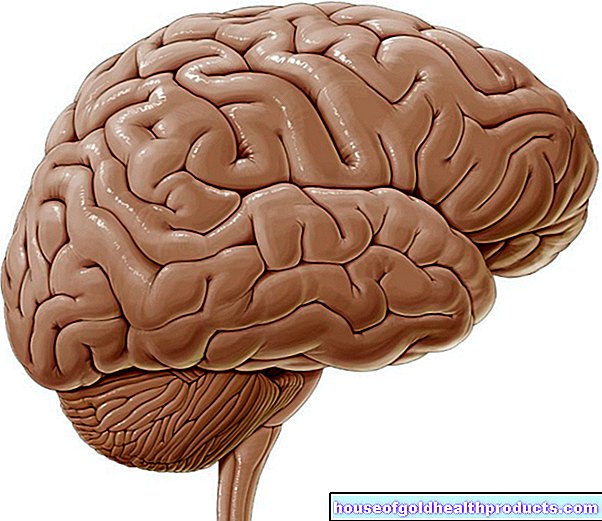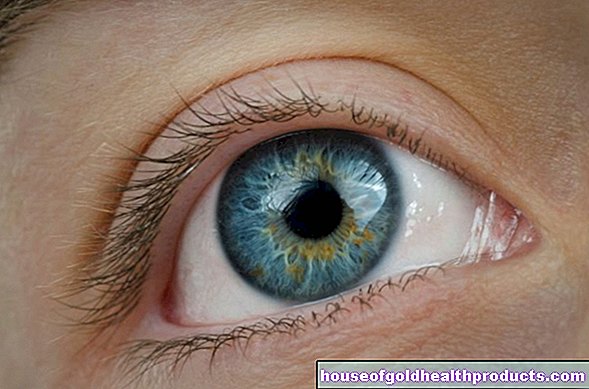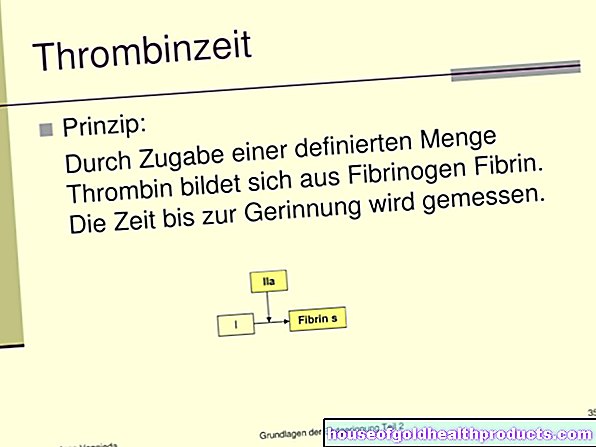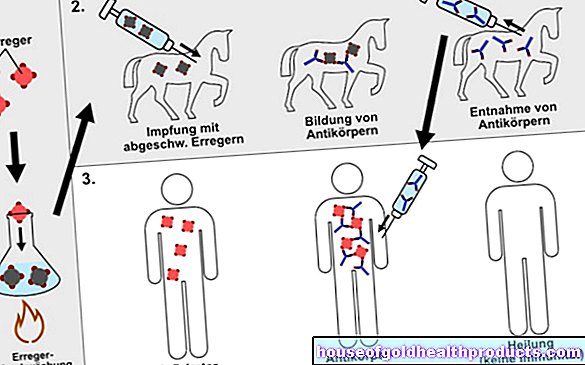Early childhood autism
Updated onHanna Rutkowski is a freelance writer for the medical team.
More about the experts All content is checked by medical journalists.Early childhood autism (Kanner autism, Kanner syndrome) is one of the most serious forms of autism. Affected children find it difficult to make social contacts and enter into relationships. Language development and behavior are also severely impaired. As a rule, these symptoms of autism appear in children before the age of three - and last for a lifetime. Read more about early childhood autism!
ICD codes for this disease: ICD codes are internationally recognized codes for medical diagnoses. They can be found, for example, in doctor's letters or on certificates of incapacity for work. F84
Early Childhood Autism: Description
When "autism" is mentioned in general, it usually means early childhood autism. This severe form of autism spectrum disorder becomes noticeable before the age of 3 and is also referred to as Kanner autism or Kanner syndrome after its first person who described it, Leo Kanner.
As with all autistic disorders, early childhood autism also shows the following impairments:
- impaired social interaction
- impaired communication / language
- repeated, stereotypical behaviors and interests
The impairments can vary in severity. Often the intelligence is also reduced
High-functioning autism
If all symptoms of early childhood autism occur with normal intelligence, experts sometimes also speak of "high-functioning autism". In the German-speaking world, it is known as highly functional autism. People have the usual symptoms of early childhood autism but have no intellectual disabilities or learning disabilities. In the further course, a mostly quite positive language development can be seen.
Babies with early childhood autism stand out early on because of their otherness. They actively avoid eye contact, they reject physical closeness and do not react to gestures and facial expressions. Imitating a laugh that is supposed to establish the relationship with the mother can be completely absent or come very late.
In addition, people with Kanner autism do not understand feelings and do not show any spontaneous emotions themselves. Facial expressions that express anger, pity, joy or sadness, for example, are not intuitively guessed at, but are derived from learned recognition features (muscle movements, wrinkles). It is not uncommon for them to misinterpret emotions for this reason.
In general, autistic children are more interested in objects than people. They are completely withdrawn and prefer to play alone than with their peers or their parents, and only with a few selected toys or objects. If at all, they only seek contact with other people in order to satisfy their needs or to fulfill goals.
The parents often suffer very much from the supposed coldness of their autistic children. Praise and affection seem to mean little to the little ones.
Impaired language development
Early childhood autism affects many children in their language development. The children usually start speaking very late - if at all. They repeat sentences or simply repeat them, but often do not understand the deeper meaning or context. They can hardly articulate themselves or their choice of words is limited. They often parrot what has been said indiscriminately or repeat a sentence over and over again. Sometimes they form new words or say, for example, “you” when they mean “I”. When speaking, autistic people only support what is said to a limited extent with appropriate facial expressions and gestures. The speech melody is also often monotonous without ups and downs, which sounds robotic.
Stereotypical behavior
Autistic children repeat certain behaviors or sentences. Such repetitive actions - called stereotypes - occur in different areas. The game with spinning wheels, for example, always follows the same pattern, objects are collected excessively and arranged according to their size. When playing, the children often only pick out a very specific detail of the toy and deal with it intensively. Her game follows a stereotypical pattern and appears very unimaginative.
When other people interrupt the rituals, the children often experience extreme anxiety and restlessness. Changes make autistic children fearful and should only be made slowly.
Decreased intelligence
Around 70 percent of children suffering from early childhood autism have an intellectual disability with an intellectual disability (exceptions: children with high-functioning autism). This can be determined with age-appropriate intelligence tests.
Exceptional island talents, such as a photographic memory or a mathematical genius, are atypical of early childhood autism. Such "savants" are more common among patients with Asperger's syndrome. However, early childhood autism leads some children to become overly interested in certain things, such as geometric shapes.
More symptoms
Kanner syndrome is often accompanied by other symptoms. Extreme fearful reactions to changes are not uncommon. The children often refuse to wear certain clothes or laugh and giggle for no apparent reason.Sometimes they misjudge everyday dangers such as car traffic. Self-harming behavior can also occur in autistic children. Sleep and eating disorders are also common in infants.
Early Childhood Autism: Therapy
Autism cannot yet be treated causally. Symptoms last a lifetime, but ease somewhat over the years. The main goal of therapy is to improve the children's social and communication skills and to support the parents. Treatment is most effective when it starts as early as possible and continues over a longer period of time.
Therapeutic focuses
Early childhood autism can be treated in a family environment, as part of the inpatient or fully inpatient. Experts prefer the day-patient approach - a mixture of therapeutic measures that are carried out at home and in specialized facilities. According to the holistic concept, the existing abilities of the child are supported and developed. The child's environment is also included in the therapy. In this way, the autistic child can train in a group, with the family and with other children.
- Social competence and communication: In the "Applied Behavior Analysis" (ABA) and the supplemented "Verbal Behavior" (VB) program, the child's social skills and language are trained. The approach was developed by Ivar Lovaas.
- Independence: The concept TEACCH - Treatment and Education of Autistic and related Communication handicapped Children is used. People with early childhood autism learn to cope better in everyday life and to understand their environment better.
- Self-control and Theory of Mind: These therapy programs try to make affected children or adolescents as aware as possible of differences between their own thoughts and those of those around them.
- Language skills: Early language training (speech therapy) can explain the social significance of linguistic elements and promote language understanding and active speaking in affected children.
- Family matters: Parents and family play a central role in the treatment of children with early childhood autism. Detailed advice and parenting training or family therapy are therefore very important in order to support the children outside of the training.
- Other therapies that have not been scientifically proven, but show good results in children with Kanner syndrome, include music and riding therapy, as well as swimming with dolphins. They are suitable as supportive therapy measures.
- Medication: Autism spectrum disorders often occur with comorbidities that make behavior therapy difficult. Medication can help if you have epilepsy or depression. Selective serotonin reuptake inhibitors (SSRIs) work well when children perform repetitive movements. However, since people with autism are particularly sensitive to medication, the side effects can be more pronounced for them. In addition, the use of these drugs is only intended to support behavioral therapies, not to replace them.
There are other forms of therapy, but they are very controversial. This includes, for example, psychodynamic, revealing therapy - here we look for pathogenic influences on upbringing and a lack of parent-child relationship, which leads to blame. Holding therapy is also controversial - the child's holding on should break their resistance.
Early childhood autism: prognosis
Early childhood autism persists throughout life - there is no cure yet. With the help of intensive therapy concepts, however, individual symptoms can be controlled and greater independence can be achieved through newly learned skills. In some people, early childhood symptoms decrease as they get older, but during puberty, many people with the disease may show increased aggressiveness towards themselves and others.
The behavioral therapies are very time-consuming and require constant training - also in the family environment. The first successes are slow to emerge. On the one hand, this is due to the severity of the disease. On the other hand, people with autismatic spectrum disorders usually have little motivation to perform the treatment.
Since people with early childhood autism often also suffer from an intellectual disability, they are dependent on a greater or lesser degree of care throughout their lives.
Tags: Diagnosis menopause Menstruation




























